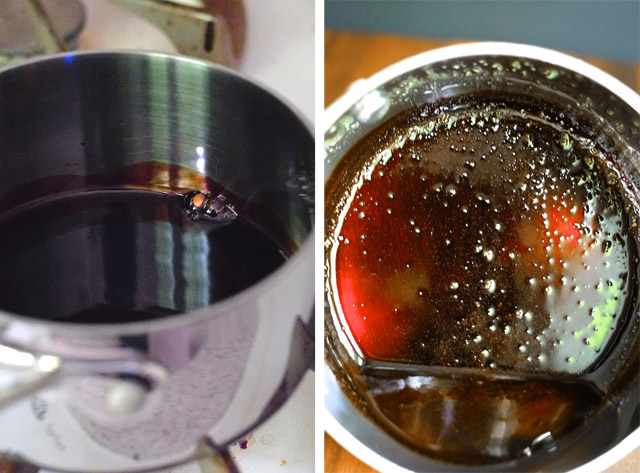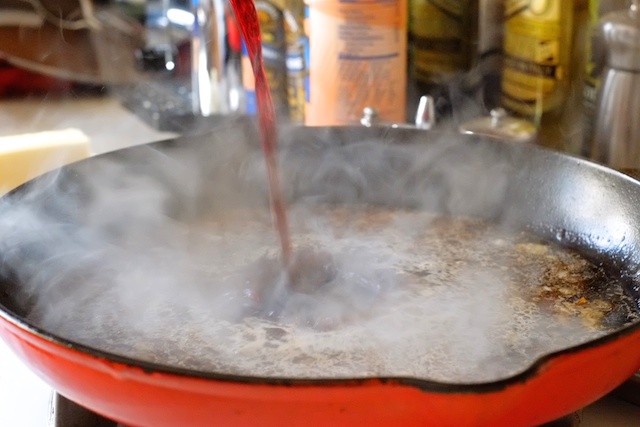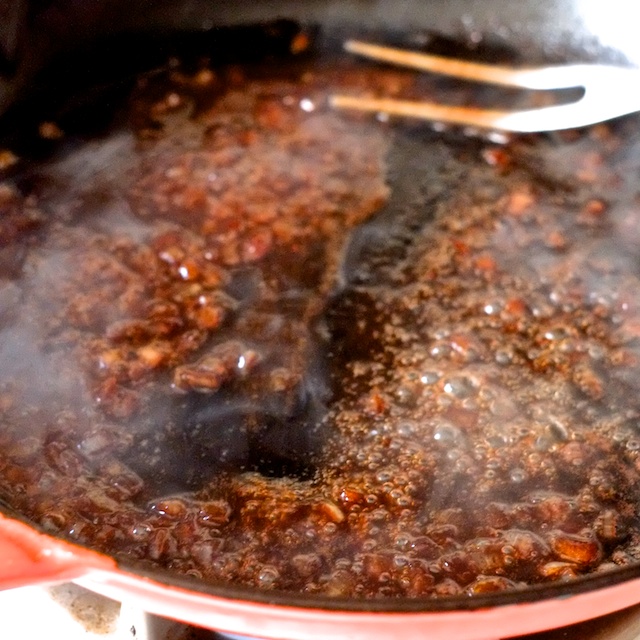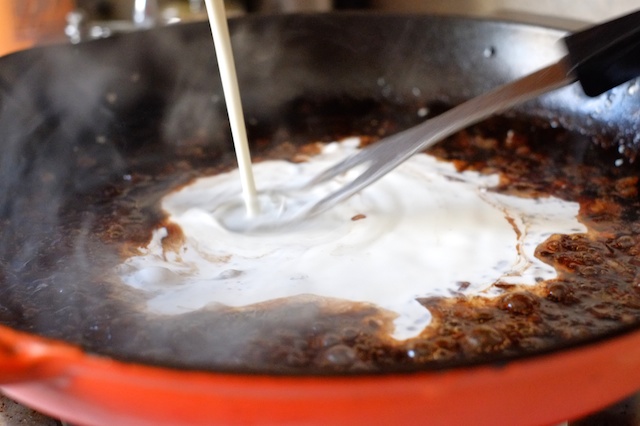Reduction is a really good method of sauce-making for cooks to approach after they’ve learned their way around a roux. When you reduce a liquid to make sauce, you concentrate the flavors present in the liquid. The method is not any harder to get the hang of than starch-thickened sauce, but reduced sauces offer a lot more flavor and complexity per ounce.
Reduced sauces also make use of all the big flavor bombs in the pantry – vinegar, wine, liquor, lemon juice, and often times some sort of allium (garlic, onion, shallot, etc.). These aren’t sauces for the faint of heart. Reductions are for decorating plates and giving food punch and edge. While these sauces aren’t the meal (the way serious gravy can be), they definitely make it. Reductions will almost never be as thick as starch-thickened sauces, but I think that makes them a little more elegant.
The simplest kind of reduction is straight liquid in a pot, heated until it’s reduced in volume. That’s it. It’s how people turn balsamic vinegar into balsamic glaze.

Speaking of balsamic vinegar, sugary liquids like balsamic vinegar and fruit juice are actually something to be careful with. While they are really wonderful in reduced sauces, liquids containing sugar need to be reduced slowly and checked frequently because they will turn to syrup and then candy if you cook them too long or too hot. And honestly I don’t know much about making candy, so go there at your own peril. This is sauce-making after all. A good rule of thumb is, if the sauce you’re making is mostly comprised of a sugary liquid, allow it to reduce by only about half of it’s volume, and do it over medium-low heat at the highest.

Reduction is a great method to use when you want to make use of some fond. A combination of wine and broth is perfect for deglazing any lovely brown bits left in your pan after cooking a hunk of meat. The moment you know your liquid has reduced enough to be called sauce, is when it can hold a line in your pan for just a moment – it looks like this:

Butter is an important player in reduced sauces because it adds a bit of heft, richness, and gloss to what could otherwise be a lip-puckering salty and tart sauce. Cream is another common addition, which serves the same purpose as butter. Butter should be whisked in after the sauce is finished cooking, while cream should be added after the initial liquid has reduced, but given some additional cooking time to thicken further.

Reductions are sometimes used in sauces that require multiple methods to achieve. These sauces are typically more advanced, the most famous being demi glace and beurre blanc. Real demi glace is essentially a mix of veal stock and brown gravy made with roux, which is then reduced until thick. Beurre blanc is made with reduced white wine and sometimes stock, emulsified with butter until thickened and slightly frothy.
Technically anything that’s been allowed to simmer and reduce in volume is a reduction of some kind, but when a sauce gains most of it’s texture from the reduction process, that’s when I call it a reduced or reduction sauce. There aren’t any hard and fast rules, it’s just concentrating liquid with heat and evaporation, which sounds more sciencey and intimidating than it feels when you actually try your hand at the stove. Up next, by way of illustration, I’ll show you a great salad to use up a balsamic reduction and my favorite pan sauce to serve with steak.